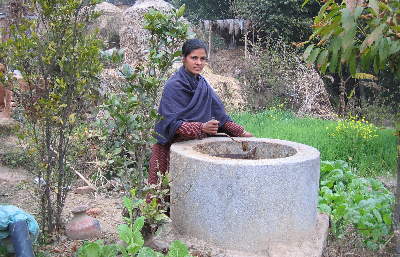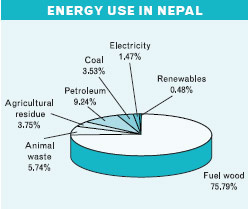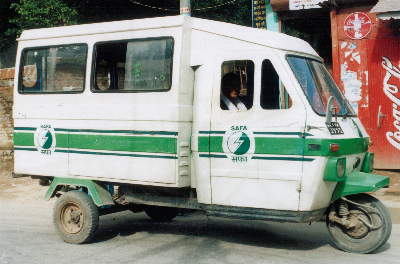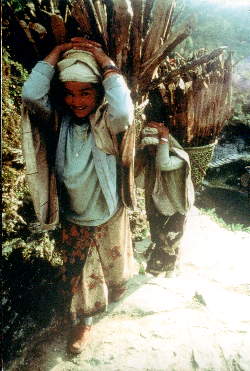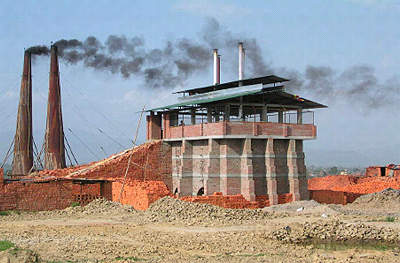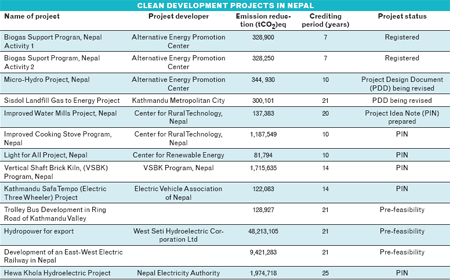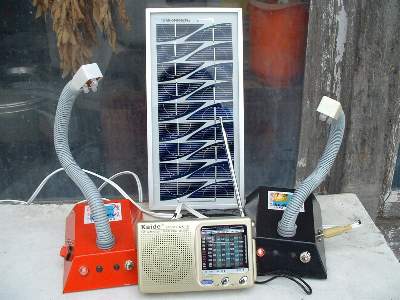Tiempo Climate Cyberlibrary
The Clean Development Mechanism in Nepal
- Tiempo archive
- Complete issues
- Selected articles
- Cartoons
- Climate treaty
- Latest news
- Secretariat
- National reports
- IPCC
About the Cyberlibrary
The Tiempo Climate Cyberlibrary was developed by Mick Kelly and Sarah Granich on behalf of the Stockholm Environment Institute and the International Institute for Environment and Development, with sponsorship from the Swedish International Development Cooperation Agency.
While every effort is made to ensure that information on this site, and on other sites that are referenced here, is accurate, no liability for loss or damage resulting from use of this information can be accepted.
 |
Noora Singh discusses the prospects, the challenges and the viability of the Clean Development Mechanism for Nepal. |
|
The author is a senior research associate with Winrock International, Nepal. |
|
The first couple of projects from the small Himalayan nation of Nepal have now been registered by the Executive Board of the Clean Development Mechanism. Nepal is one among the group of developing Non-Annex I countries that can host projects for the Clean Development Mechanism.
The Kyoto Protocol, adopted during the Third Conference of the Parties to the United Nations Framework Convention on Climate Change (UNFCCC) in December 1997, set quantifiable emission reduction targets for developed countries included in Annex I of the Framework Convention.
In order for countries to achieve their targets where it is most economical to do so, the Protocol developed flexible mechanisms. Besides emissions trading and Joint Implementation, the Clean Development Mechanism is the only flexible mechanism that involves developing countries. It has been developed as a unique mechanism for increasing financial flows to developing countries for promoting clean technologies that not only reduce greenhouse gas emissions but also contribute towards the sustainable development of the country.
With the entry into force of the Kyoto Protocol in February 2005, the Clean Development Mechanism and the carbon market as a whole has seen a lot of activity. The first Certified Emission Reductions have recently been issued and a total of 63 Clean Development Mechanism projects has been registered by the Executive Board. Nepal has recently deposited the instrument for accession to the Kyoto Protocol and has thus fulfilled the first requirement for participation in the Clean Development Mechanism.
|
|
A woman feeding her biogas digester in rural Nepal |
The next participation requirement is the establishment of a national authority known as the Designated National Authority. The Designated National Authority is entrusted with the task of approving Clean Development Mechanism projects on the basis of their contribution to sustainable development of a country. The Authority thus plays an important role by evaluating projects so that they fulfil one of the two major objectives of the Clean Development Mechanism.
Most of the countries in Latin America and Asia have already established their Designated National Authorities and a number of them have now had experience in evaluating and approving Clean Development Mechanism projects. Nepal has recently established its Designated National Authority under the Ministry of Environment, Science and Technology and has thus fulfilled this stage of the requirement.
The Promotion of Renewable Energy, Energy Efficiency and Greenhouse Gas Abatement (PREGA) project is funded by the Netherlands Government, and implemented by the Asian Development Bank. The PREGA project, underway in Nepal and 15 other countries in Asia, aims to increase investments in renewable energy technologies through the Clean Development Mechanism, among other things.
In Nepal, this project has been instrumental in furthering the Clean Development Mechanism process through capacity building as well as project development and assistance. The project has the Ministry of Environment, Science and Technology as the National Counterpart Agency and Winrock International, Nepal, working as the National Technical Expert.
This article discusses the opportunities and constraints for Nepal for participation in the Clean Development Mechanism, mostly in light of the PREGA Project.
Greenhouse gas mitigation potential and Clean Development Mechanism sectors in Nepal
According to the National Greenhouse Gas Inventory Study of Nepal (2.8Mb download), the net emissions of carbon dioxide, methane and nitrous oxide were 9,747Gg, 877Gg and 30Gg, respectively, for the base year 1994/95. Greenhouse gas emissions from the country are negligible in comparison to other countries in the world and in the region as well.
The land use change and forestry sector is the largest emitter of carbon dioxide with emissions of 22,895Gg but is also the sector that allows carbon sequestration to the amount of 14,778Gg. The energy sector is the second largest emitter of carbon dioxide with 1,465Gg and the transportation sector contributes the largest percentage here. Methane emissions from the agriculture sector through enteric fermentation and rice cultivation as well as solid waste management are also important sources in the country.
|
|
|
Energy consumption by fuel type, Nepal |
Clean Development Mechanism potential in the energy sector
Historically, traditional sources of energy like fuelwood, animal waste and agricultural residue have been used to meet energy requirements in Nepal. The scenario in recent times has not changed much, although modern forms of energy are increasingly being used. As illustrated in the figure above, 86 per cent of the total energy consumption in Nepal in 2002 was supplied by biomass sources. The large share of fuelwood in the energy mix suggests that this consumption is unsustainable and is exerting pressure on the already depleted forest resources of the country.
Electricity consumption accounted for a mere 1.47 per cent in 2002, indicative of the fact that access to electricity is still restricted to the more urban areas of the country. The rural population is largely detached from the grid and, even in areas served by the national grid, a large number of people cannot afford a grid connection. Electricity generation in the country is mainly from clean hydropower. However, a large proportion of the country's hydropower resources remain untapped. Also, coupled with the rugged terrain of the country, grid expansion is expensive and difficult.
Access to energy is considered to play a vital role in poverty reduction. A growing volume of literature in recent times has voiced the need for integrating energy in efforts to achieve the Millennium Development Goals. In the context of Nepal, a clear connection can be seen between energy, the Millennium Development Goals and the Clean Development Mechanism.
|
|
Safa Tempo (electric three wheeler) on the streets of Kathmandu |
The share of renewables in the total energy budget is a mere 0.48 per cent. This opens the door for a mechanism such as the Clean Development Mechanism to fill the financing gap for promotion of renewable forms of energy. Off-grid and distributed forms of energy like solar, biogas and micro-hydro can not only increase rural access to energy but also reduce the share of fossil fuel and traditional fuel consumption in the country. The residential sector consumes the most energy in Nepal supplied by a mix of biomass, electricity and kerosene. The Clean Development Mechanism thus has a clear role in promoting clean energy for domestic end-uses like cooking and lighting. Renewable energy and energy efficiency projects directed at such household levels will also help reduce poverty and contribute to Millennium Development Goals by increasing income-generating activities, education, gender equality, environmental quality and health in rural Nepal.
The industrial and commercial sectors are not very vibrant in the country and do not consume much energy (5.25 per cent and 1.33 per cent, respectively, in 2002). The fuel mix of these sectors shows a combination of biomass and fossil fuels. The Clean Development Mechanism has some potential in these sectors for fuel switching or energy efficiency. The transportation sector is largely dependent on fossil fuels and imported fuels at that. The Clean Development Mechanism could benefit this sector through fuel switching or through promotion of electric vehicles that utilize the hydroelectricity generated within the country.
Clean Development Mechanism potential in methane emissions avoidance
Agricultural and waste management sectors contribute to methane emissions with rice cultivation and enteric fermentation contributing the greatest share of methane emissions in the agriculture sector. Improved water management practices and improved livestock feed management can contribute to reduction in emissions from these activities and can be developed as Clean Development Mechanism projects as well as better livestock manure management practices. The Clean Development Mechanism pipeline in the agriculture sector is dominated by manure management and methane recovery projects. New methodologies will have to be developed for improved water management and feed management projects.
Proper management of solid waste has been a challenge in urban areas of the country. Most municipalities practice dumping along river banks thereby affecting river water quality. A couple of landfill sites are operational in the country and new ones are continually being planned. Landfill gas, the primary source of methane emissions, is not regulated by any legislation in the country. One of the most popular project activities under the Clean Development Mechanism is landfill gas management. There is thus some potential for Nepal to benefit from financing in the waste management sector. The large up-front investment requirements and the lack of technological know-how locally pose barriers for such project activities which is where the Clean Development Mechanism could contribute by generating an extra stream of revenue for the projects.
|
|
Women carrying firewood for cooking in rural Nepal |
Clean Development Mechanism potential in the land use, land use change and forestry (LULUCF) sector
Project activities in the LULUCF sector that are eligible in the first commitment period are restricted to afforestation and reforestation activities. This, however, has been a contested ground within the Clean Development Mechanism due to issues such as scientific uncertainty, appropriate methodology and non-permanence. The first afforestation and reforestation methodology has recently been approved by the Clean Development Mechanism Executive Board.
The National Greenhouse Gas Inventory Study of Nepal reveals that a large amount of carbon dioxide can be absorbed by biomass in the country. Afforestation and reforestation projects could have some potential in the country once methodological hurdles have been crossed.
Clean Development Mechanism project development in Nepal
Biogas projects
Biogas projects are the first Clean Development Mechanism projects in Nepal. They are small-scale projects that involve building of a number of biogas plants in the country. Carbon revenue through these projects will be utilized by the sector to make biogas a commercial activity in the country that can sustain itself in the face of declining subsidies and donor support. The biogas project is a good example of a project that delivers a number of benefits to rural households while reducing greenhouse gas emissions.
Biogas displaces fossil fuels and firewood utilized for cooking and lighting purposes in rural households and provides a clean source of energy using local resources that creates better living conditions for rural people. Biogas installation in a rural household also reduces the drudgery of women and children associated with firewood collection. Children will, therefore, have more time to concentrate on school work. Increased savings through avoided purchases of fossil fuels could also be utilized in generating alternative livelihoods.
Project activities of the PREGA project
The PREGA Project in Nepal is developing project idea notes, project design documents and pre-feasibility studies for a number of potential Clean Development Mechanism project activities in the country. As noted earlier, the PREGA Project has been instrumental not only in project development but also in other important related activities such as capacity building and providing support, through research and public consultation, for the establishment of the Designated National Authority in Nepal. A number of training workshops were conducted for creating awareness of the Clean Development Mechanism in important sectors such as the business community, non-governmental organizations and financial and governmental institutions. A Carbon Fair was also organized as part of the project to allow project developers in the country to interact with buyers and project validators to better understand the Clean Development Mechanism process.
|
|
A Vertical Shaft Brick Kiln that offers a more energy efficient technology for the brick industry |
Additional project activities in the country
The Alternative Energy Promotion Centre, under the Ministry of Environment, Science and Technology, is the principal government organization involved in promoting renewable sources of energy and energy technologies in the country. The Centre is project developer of the biogas project described earlier. The Alternative Energy Promotion Centre is currently developing a couple of Clean Development Mechanism projects involving the installation of micro-hydropower plants and improved water mills for off-grid rural communities. The micro-hydro project is being developed with the assistance of the Community Development Carbon Fund of the World Bank and Winrock International. The improved water mills project is being developed in cooperation with the Center for Rural Technology, Nepal.
The Nepal Electricity Authority, a government agency responsible for electricity generation and distribution in the country, is looking to develop hydropower projects in the country that can displace electricity imports from neighbouring India or displace thermal electricity generation within the country.
A list of Clean Development Mechanism projects in Nepal and their estimated amount of emission reductions is provided in the table below. Additional projects are being developed under the PREGA Project.
|
|
|
Table 1: Clean
Development Mechanism projects in Nepal. |
Challenges for Nepal
Nepal, with a Human Development Index of 0.499, ranks 143rd in the world. With a population growth rate of approximately two per cent and with 38 per cent of the population below the poverty line, it is one of the Least Developed Countries in the world.
Greenhouse gas emissions in Nepal are negligible. Recognizing the global challenge and its own vulnerability to climate change, however, Nepal has become a party to the climate treaty and the Kyoto Protocol. The Clean Development Mechanism, in theory, is perceived as a mechanism that delivers positive sustainable development effects to developing countries such as Nepal while also reducing greenhouse gas emissions. Economic development is a pressing need for Nepal and in such a context, the Clean Development Mechanism does provide an incentive for a cleaner and more sustainable path to development. The challenges, risks and uncertainties of the Mechanism should not, however, be ignored.
The Clean Development Mechanism has been developed as a market mechanism. The foremost challenge for a small Least Developed Country like Nepal is to be able to compete in this market. Increasing competitiveness translates to developing a healthy pipeline of Clean Development Mechanism projects in the country. This, though, necessitates a number of requirements. Awareness of the Mechanism is needed in all sectors for project development. Nepal is yet to develop a comprehensive climate policy and the Clean Development Mechanism is a novel concept that changes continuously. Apart from the PREGA Project, the country has not been the focus for capacity development projects of international development organizations. The Designated National Authority has only recently been established and is not yet in a position to play a promotional role. In fact, the Designated National Authority itself is in need of further assistance and capacity development in order to perform its basic function, that of evaluating and approving Clean Development Mechanism projects.
|
|
A Solar Tuki Set to be sold to households to displace kerosene-based lamps |
Securing finance for Clean Development Mechanism projects has been a major hurdle for most developing countries. Projects are mostly developed unilaterally and carbon credit buyers are rarely willing to provide up-front finances and when they do the Certified Emission Reductions purchase is set at a lower price. The political and economic situation of Nepal poses an increased risk for investment in the country and most Clean Development Mechanism projects involve new and emerging technologies and procedures that add to the investment risk.
In the absence of foreign investment, financial institutions in the country lack a full comprehension of the Mechanism which makes them hesitant to provide debt financing for projects. Carbon credit buyers, attracted to countries like Brazil and India that are currently supplying the majority of credits in the market, are looking for projects that can deliver credits within the first commitment period. The uncertainty of the value of Certified Emission Reductions beyond 2012 has also been a deterrent for buyers purchasing credits beyond this time. The window of opportunity for Nepal, before which time it needs to develop projects that can benefit from carbon trading, is, therefore, small. The country faces a huge challenge in terms of developing enough capacity for a smooth project development process that can secure carbon financing.
The Clean Development Mechanism Executive Board, in a recent decision, has excluded the eligibility of projects that avoid unsustainable biomass consumption. Traditional fuel consumption in the form of firewood and deforestation is a problem in most developing countries including Nepal. Projects like biogas and improved cooking stoves in Nepal that displace firewood consumption in rural areas will be excluded as a result of this decision. This poses a further challenge for Nepal where the majority of energy supply is from firewood. The Clean Development Mechanism could have provided a platform to leapfrog from traditional to clean energy avoiding the need for fossil fuels.
International efforts are ongoing for new methodologies that address the displacement of non-renewable biomass and to include efforts that avoid deforestation. Carbon removal through biomass growth has been seen as an important player in net greenhouse gas emissions in Nepal. Inclusion of projects that avoid deforestation through conservation of existing forests would provide a potential Clean Development Mechanism sector for Nepal. The course of international events related to these topics will be very important for the nation.
The issue of whether the Clean Development Mechanism is delivering real sustainable development benefits to host countries has been a matter of much discussion in the international arena. As has been noted, the current trend of projects and the interest of buyers lie in large projects that can generate a large volume of Certified Emission Reductions in a short period of time. Most current projects concentrate on industrial processes and mitigating industrial gases with high global warming potentials.
Projects from Nepal are mostly small-scale, aiming to deliver distributed renewable energy services to rural households. Projects like the biogas project, light-for-all project, improved cooking stoves, micro-hydropower project and improved water mills project are the ones that can contribute to reducing poverty, improving rural livelihoods, health and education. These are projects at the grassroots level and are ones that will significantly contribute to the sustainable development of the country.
In the race to meet their Kyoto Protocol targets, the developed world’s nations need to readjust their focus and look at smaller developing countries that have the very real potential to supply projects that actually meet the objectives of the Clean Development Mechanism.
Disclaimer
The views expressed in this article are those of the author
and do not explicitly represent those of the author's
affiliated organization.
Further information
Noora Singh, Winrock International Nepal, PO Box 1312,
Kathmandu, Nepal. Fax: +977-1-4476109. Email: noorasingh@winrock.org.np.
Web: www.winrock.org.np.
On the Web
Nepal's Initial National Communication under the UNFCCC
is available as a 2.8Mb
download. The UNFCCC
website provides access to further information and
documents related to the Kyoto Protocol. A comprehensive
listing of Clean
Development Mechanism activities, including current
status, is available. The Tiempo Climate Cyberlibrary
presents a listing of theme sites on the Clean Development Mechanism and
on mountains and climate
change.
Bright Ideas

General Electric plans to cut solar installation costs by half

Project 90 by 2030 supports South African school children and managers reduce their carbon footprint through its Club programme

Bath & North East Somerset Council in the United Kingdom has installed smart LED carriageway lighting that automatically adjusts to light and traffic levels

The United States National Oceanic and Atmospheric Administration and the American Public Gardens Association are mounting an educational exhibit at Longwood Gardens showing the link between temperature and planting zones

The energy-efficient Crowne Plaza Copenhagen Towers hotel is powered by renewable and sustainable sources, including integrated solar photovoltaics and guest-powered bicycles
El Hierro, one of the Canary Islands, plans to generate 80 per cent of its energy from renewable sources

The green roof on the Remarkables Primary School in New Zealand reduces stormwater runoff, provides insulation and doubles as an outdoor classroom

The Weather Info for All project aims to roll out up to five thousand automatic weather observation stations throughout Africa

SolSource turns its own waste heat into electricity or stores it in thermal fabrics, harnessing the sun's energy for cooking and electricity for low-income families

The Wave House uses vegetation for its architectural and environmental qualities, and especially in terms of thermal insulation

The Mbale compost-processing plant in Uganda produces cheaper fertilizer and reduces greenhouse gas emissions

At Casa Grande, Frito-Lay has reduced energy consumption by nearly a fifth since 2006 by, amongst other things, installing a heat recovery system to preheat cooking oil
Updated: May 15th 2015
